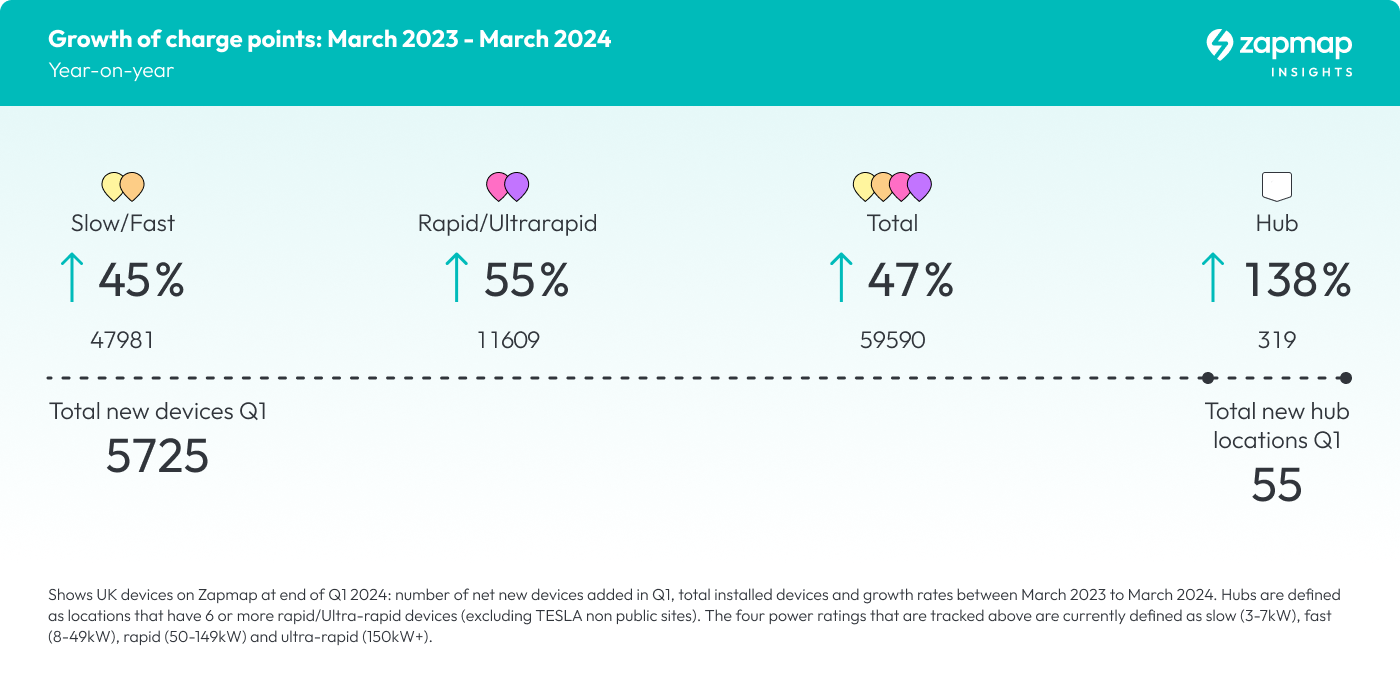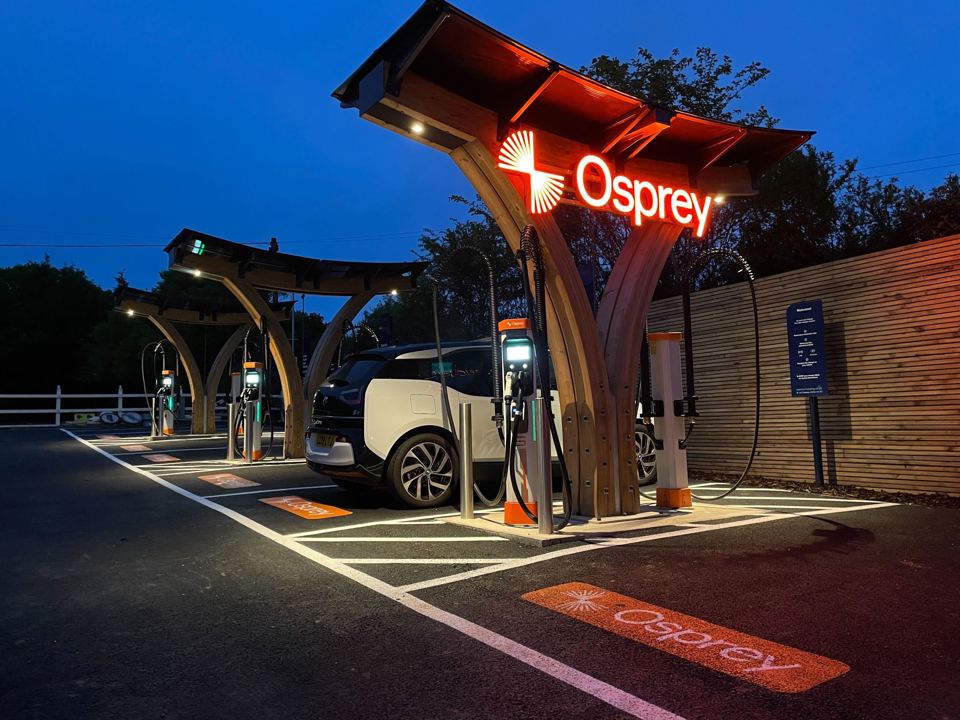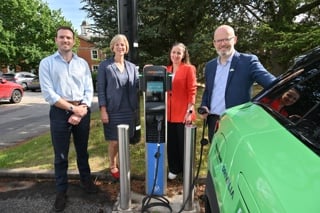There has been a 10.5% increase in the number of public electric vehicle (EV) charge points in the last quarter, with more than 55 new high-power charging hubs now available, according to new figures from Zapmap.
The overall rate of installation has increased by 35% compared with the average across 2023, with some 59,590 charging devices now installed.
This figure represents a 10.5% increase in the total number of public chargers since the end of 2023, and a 47% increase since the end of March 2023.
Zapmap reports that 5,725 charge points were installed in the first quarter of 2024 (January, February and March), at a rate of over 1,900 per month - 35% increase on the 2023 average of 1,400 per month.
Of the 5,725 public chargers installed in the quarter, 25% of them (1,436) are high-powered devices with 832 of these the speediest chargers available - 150kW+ ultra-rapid devices.
Zapmap’s statistics also show that the top five networks which provide high-power charging infrastructure in the UK have installed 75% of the rapid and ultra-rapid charge points since the end of 2023.
Between them, InstaVolt, Tesla, BP Pulse, Osprey and Gridserve installed 839 chargers in the first three months of the year.
Of these, Osprey led the charge in the first quarter after installing more than 350 charge points.
Notable new entrants and challengers include Smart Charge from Sainsbury’s, whose network already comprises almost 190 chargers - more than half of which were installed in 2023 – and Applegreen Electric.
The latter operates around 160 ultra-rapid devices up and down the UK, primarily at Welcome Break motorway service areas.
Melanie Shufflebotham, co-founder and chief operating officer at Zapmap, said: “It’s fantastic to see that the strong pace of charger installations seen last year has already been exceeded in the first quarter of 2024.
“In particular, high-powered chargers and hubs are showing great momentum, with new hubs and chargers popping up everywhere from supermarkets to motorway services and retail outlets.”

The Zapmap data also reveals continued growth in the number of highpowered charging hubs opening across the country.
Defined by Zapmap as locations with six or more rapid/ultra-rapid charging devices, there are essential for electric car drivers on longer journeys.
The figures exclude Tesla locations that are not yet available for drivers of other car brands.
As of the end of March, 319 high-power charging hubs were available - up from 264 at the end of December.
All areas across the country have experienced a rise in the number of charging hubs in the first quarter of the year.
Notably, Northern Ireland saw its first two hubs installed by Ionity at the Kennedy Centre, Belfast, and at Toomebridge by Lough Neagh.
The South West also saw 11 new hubs open during January, February and March, meaning there are now 30 high-power charging hubs in the region, having risen from 19 at the end of December.
Elsewhere, the East of England leads the way with 42 hubs as of the end of March, followed by Scotland with 39 and the North West with 38.
Zapmap’s figures also reveal that charge point provision to support drivers unable to charge at home continued to grow in the first quarter of the year.
Almost 1,500 new onstreet chargers (1,423) were installed since the end of December, bringing the total number to 21,475. At present, the majority of these (16,405) are located in Greater London.
However, the rest of the UK is seeing far higher growth in the number of on-street devices being installed.
While London saw an increase of just over 4% in the first three months of the year, the rest of the UK saw the number of on-street chargers increase from 4,325 at the end of December up to 5,070 at the end of March, an increase of more than 17%.
These latest on-street charge points are still typically being installed under the government’s ORCS scheme (On-Street Residential Chargepoint Scheme), while new funding has started to be allocated to local authorities through the Local Electric Vehicle Infrastructure (LEVI) scheme.
Despite this, with lengthy procurement processes to pass through, it is unlikely that there will be a significant increase in local on-street charging provision this year, says Zapmap.























Login to comment
Comments
No comments have been made yet.